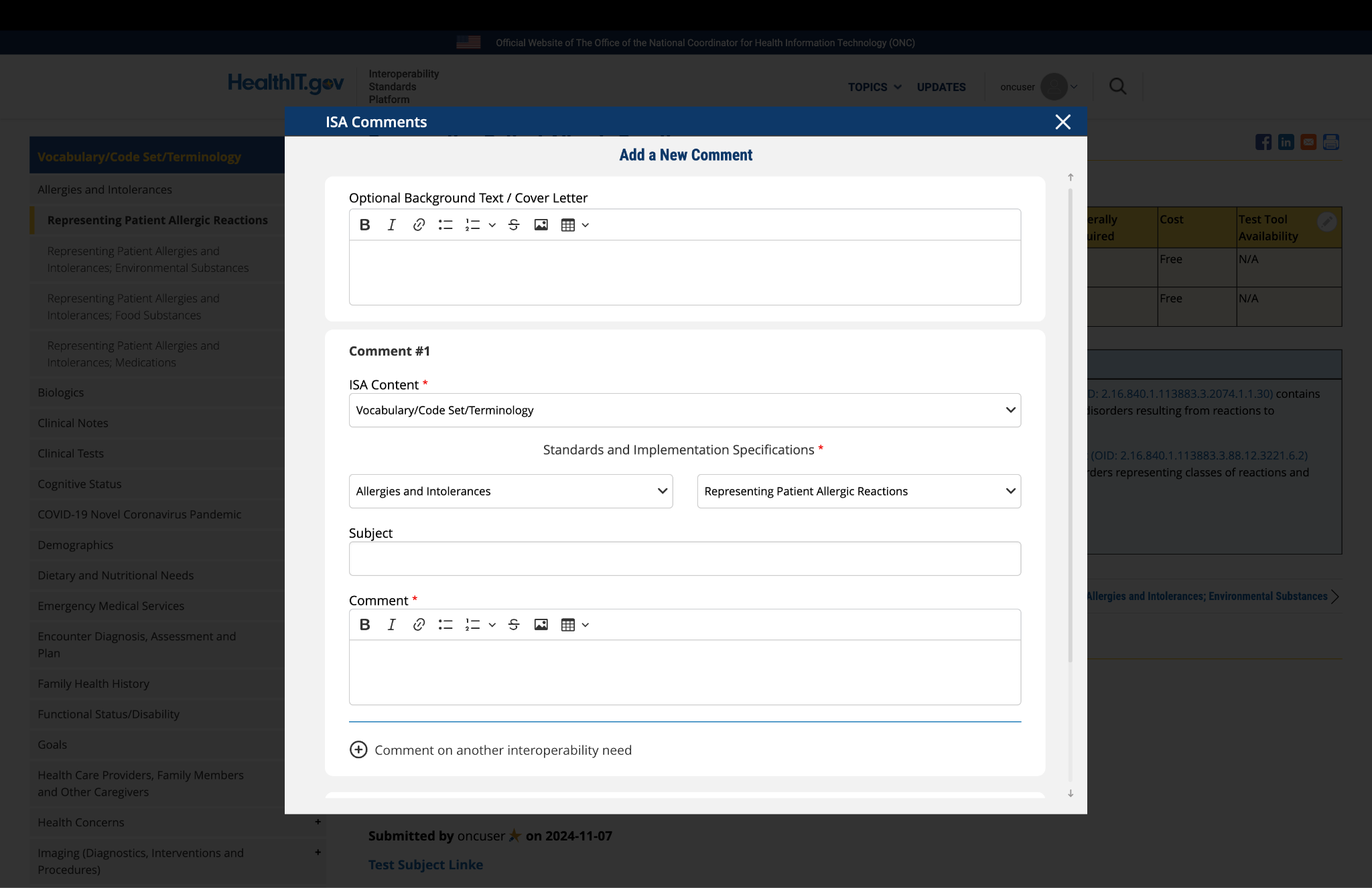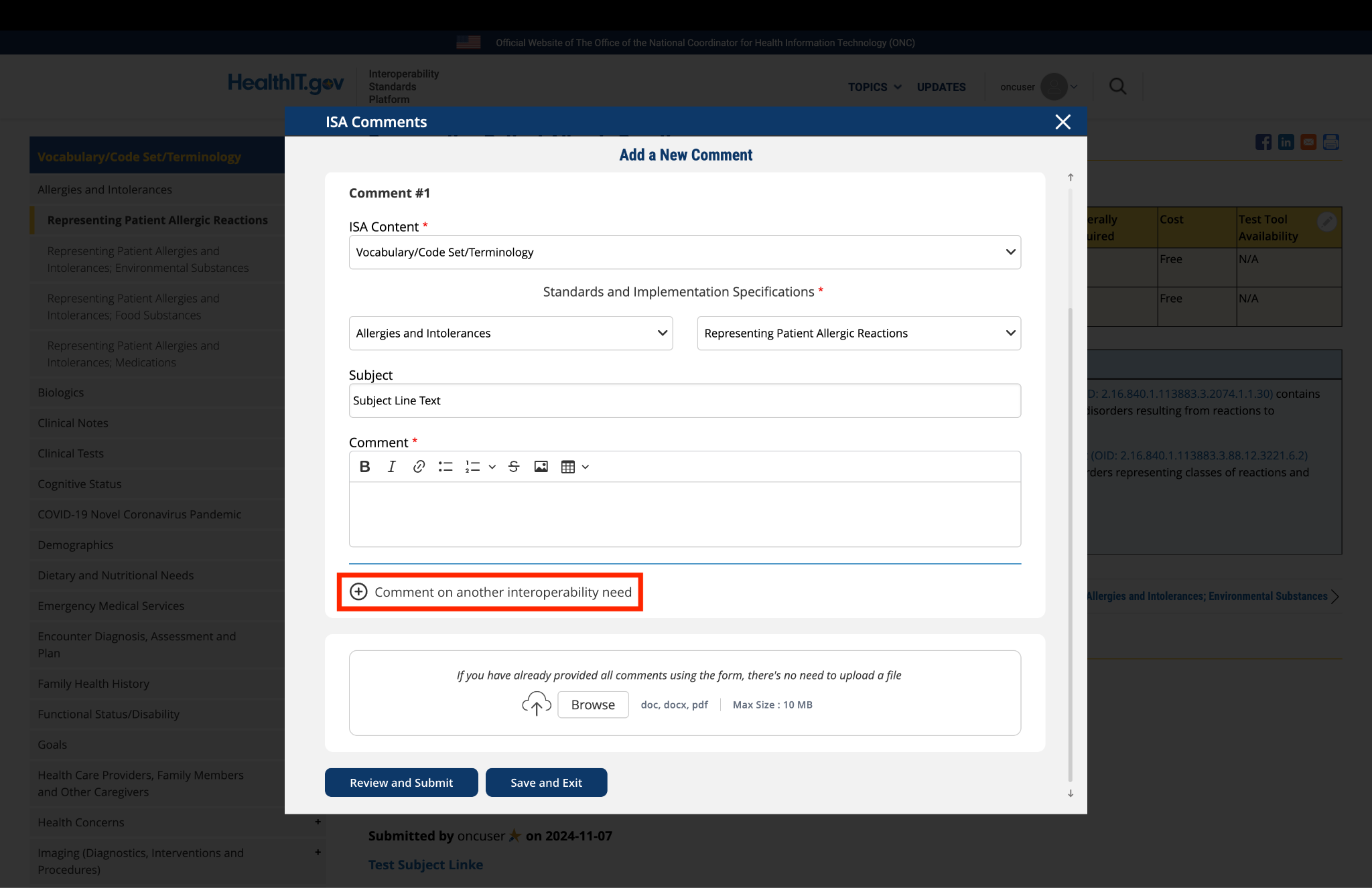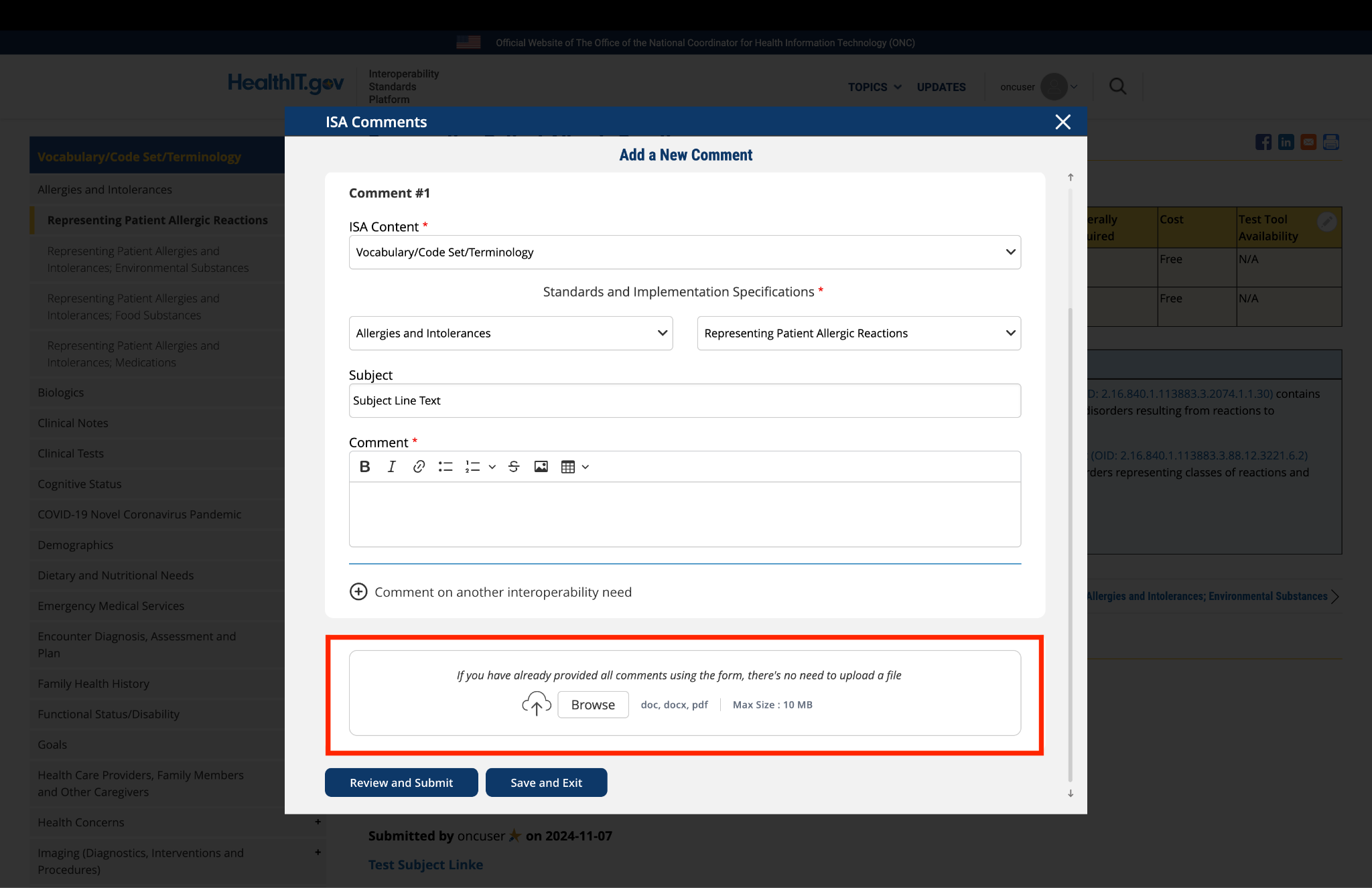| Type | Standard / Implementation Specification | Standards Process Maturity | Implementation Maturity | Adoption Level | Federally required | Cost | Test Tool Availability |
|---|---|---|---|---|---|---|---|
|
Standard
|
Final
|
Production
|
Yes
|
Free
|
N/A
|
||
|
Standard
|
Final
|
Production
|
No
|
Free
|
No
|
||
|
Standard
|
Final
|
Production
|
No
|
Free
|
No
|
||
|
Standard
|
Final
|
Production
|
No
|
$
|
N/A
|
| Limitations, Dependencies, and Preconditions for Consideration |
Applicable Value Set(s) and Starter Set(s)
|
|---|---|
|
|
Comment
Submitted by cmcdonald on
Since this LOINC code and…
Since this LOINC code and answer set has been developed (30 behavior and functional status variables suggested by the IOM report and adopted for requirement in the last MU NPRM), the adoption level could now be very high.
Submitted by gdixon on
LOINC cited is insufficient
76542-0 is stated to be Occupational Stress Questionnaire. Stress has multiple causes, Occupational, Personal, etc. This needs exploration and better difinition
|
Do you feel stress - tense, restless, nervous, or anxious, or unable to sleep at night because your mind is troubled all the time - these days [OSQ] |
supplemental LONIC suggestion
|
Now thinking about your mental health, which includes stress, depression, and problems with emotions, for how many days during the past 30 days was your mental health not good [HRQOL] |
Submitted by cmcdonald on
This is the specific one…
This is the specific one chosen (from a Finnish survey instrument by the IOM report and required by ONC), it is what is in there.








Submitted by mattreid on
The AMA requests that the…
The AMA requests that the Current Procedural Terminology (CPT) code set be added to the standards listed in Section I: Representing Stress. The CPT codes 90839 and 90840 are used to identify psychotherapy for a crisis. Also, the CPT Evaluation and Maintenance services include assessing a patient’s level of stress.
CPT is a comprehensive and regularly curated uniform language that accurately describes medical, surgical, and diagnostic services and provides for reliable communication among users. It has an extremely robust and mature development process with open and transparent meetings and clinical input from national medical specialties and relevant stakeholders. It is the most widely adopted outpatient procedure code set. Use of the CPT code set is federally required under HIPAA.